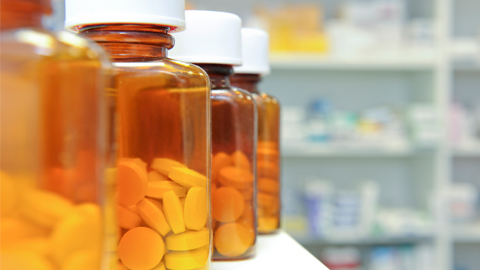Advances in the detection of GHB, used in drug-facilitated sexual assaults

06/09/2017
Researchers from the Nuclear Magnetic Resonance facility (SeRMN) of the Universitat Autònoma de Barcelona, the Centro de Investigación Principe Felipe in Valencia and the King’s College of London in the UK recently published a study in Analytical Chemistry describing significant improvement in the long term detection of gamma-hydroxybutyric acid (GHB) consumption, a drug increasingly associated with drug-facilitated sexual assault (DFSA).
GHB is a substance which produces a loss of consciousness. As a prescription drug, it is used for narcolepsy and to treat pain, tiredness and fibromyalgia symptoms. However, it is increasingly also applied to incapacitate a person and provoke a loss of consciousness, with the aim of sexually abusing them. Given the body's ability to rapidly absorb and metabolise the drug (detection is only possible in blood and urine up to 3 - 4 hours after being administered), it is very difficult to obtain experimental and scientific evidence of drug intake once the victim realises the attack has taken place and reports it. Therefore, there is a need to develop analytical methods that detect consumption of GHB in an indirect manner and up to several hours after being consumed.
The published study was conducted on samples from a clinical trial carried out with volunteers who were administered small doses of GHB. Blood and urine samples were then taken every 30 minutes following the administration of the drug. The samples were analysed using nuclear magnetic resonance (NMR), a non-destructive technique which allows analysing the samples with a minimum manipulation, and combined with metabolomic methods. This allowed researchers to find significant differences between samples collected before GHB intake and those taken 20 hours after drug administration.
The results led researchers to identify glycolic acid, a GHB metabolite, as a potential surrogate biological marker for drug intake; its slower metabolism would allow detecting GHB consumption indirectly up to 20 hours after its administration.
The study demonstrates the possibility of developing metabolic studies using NMR techniques in this area and their complementarity with other analytical techniques.
Reference: Martina Palomino-Schätzlein, Yaoyao Wang, Alan D. Brailsford, Teodor Parella , David A. Cowan, Cristina Legido-Quigley, and Míriam Pérez-Trujillo. “Direct Monitoring of Exogenous Y-Hydroxybutyric Acid in Body Fluids by NMR Spectroscopy” Anal. Chem., 2017, 89 (16), pp 8343–8350. DOI: 10.1021/acs.analchem.7b01567